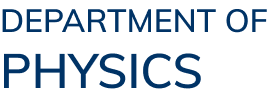Transport, Magnetic and Thermodynamic Properties of the Superconductors Ca3(Ir0.91Co0.09)4Sn13 and Ba1-xKxFe2As2
14:30 - 15:30
Room 4472 (Lifts 25-26), HKUST
Abstract
In this thesis, two kinds of superconductors $Ca_3(Ir_{0.91}Co_{0.09})_4Sn_{13}$ and $Ba_{1-x}K_xFe_2As_2$ were investigated through various experiments including magnetization, specific heat, thermal expansion, thermal conductivity, resistivity and point contact Andreev reflection spectroscopy. The specific heat and resistivity data of $Ca_3(Ir_{0.91}Co_{0.09})_4Sn_{13}$ are presented, together with further analysis to study the electron-phonon interaction. We demonstrated the important role of the low-lying phonon modes in the pairing mechanism of this superconductor which points to a conventional phonon-mediated origin of superconductivity in $Ca_3Ir_4Sn_{13}$ and rules out a magnetic spin fluctuation mediated pairing scenario. The critical fluctuation in the iron based superconductor $Ba_{1-x}K_xFe_2As_2$ was studied by applying the 3D XY and the 3D LLL scaling models to our specific heat and thermal expansion data. Our results indicate the weakest critical fluctuations at optimal doping and demonstrate that a strong increase of the critical fluctuations regime is responsible for the transition broadening in magnetic fields, which is a direct consequence of a magnetic-field-induced finite size effect and the confinement of quasiparticles in low Landau levels. The re-entrant tetragonal phase of $Ba_{0.76}K_{0.24}Fe_2As_2$ was investigated with various experimental probes. With high precision magnetization measurements, we for the first time proved the spin reorientation in the re-entrant tetragonal phase transition in $Ba_{0.76}K_{0.24}Fe_2As_2$. Together with earlier investigations in Na-doped Ba122, our result reveals that the spin reorientation is a universal property in the hole-doped Ba122 system. The superconducting pairing symmetry of $Ba_{0.76}K_{0.24}Fe_2As_2$ was studied by field-angle resolved thermal conductivity experiment. A six-fold oscillation in the thermal conductivity was observed, which is inconsistent with the tetragonal crystal lattice structure, indicating a novel highly complex superconducting nodal order parameter symmetry rather than s-wave or d-wave symmetry.
Event Format
Speakers / Performers:
Mr Jianqiang Hou
Department of Physics, The Hong Kong University of Science & Technology
Language
English
Organizer
Department of Physics
